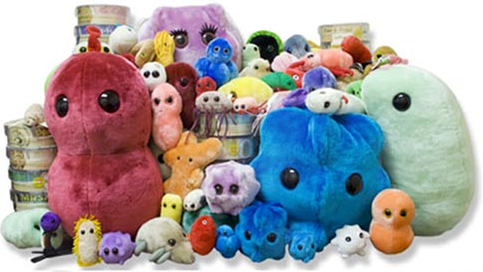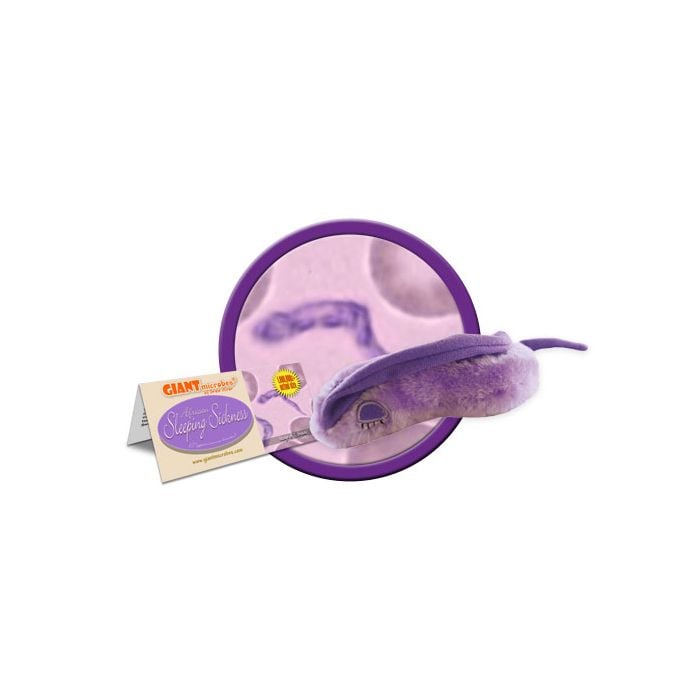Sleeping Sickness (Trypanosoma brucei)
Out of Stock

Your purchase supports the mission of Universities Allied for Essential Medicines, a global network of students and academics organizing to ensure publicly funded medicines are affordable to the public.
5% of the proceeds from your purchase will be donated to UAEM.
Product Details
Additional Information
| Sizes | Giantmicrobes are based on actual microbes, cells, organisms and other critters, only 1,000,000 times actual size! Gigantic (GG) 16-24" XL (XL) 10-15" Original (PD) 5-8" Keychain (KC) 2-4" with clip |
|---|---|
| Materials | Plush from all new materials. Stuffed with polyester fiber fill. Surface washable: sponge with water & soap, air dry. |
| Packaging | Each plush microbe includes a printed card with fun, educational and fascinating facts about the actual microbe or cell. |
| Safety | Every product meets or exceeds U.S. and European standards for safety. For ages 3 and up. |
All about Sleeping Sickness (Trypanosoma brucei)
FACTS: Of all the terrifying creatures in Africa, few are as frightening as the little tsetse fly. (Tsetse means “fly” in Setswana – so a tsetse fly is a fly… fly.) To begin with, the bite of this bumblebee-sized insect really hurts! But far more ominously, tsetse carry the dreaded Trypanosoma brucei parasite responsible for sleeping sickness.
Headaches and fever are often the first indications of the protozoan’s dreadful purpose. These are followed by Winterbottom’s sign – the swollen lymph nodes behind the ears and just above the base of the neck which herald the true nature of the infection.
As it spreads from the bloodstream to the central nervous system (over the course of weeks or years, depending on the variety), personality changes begin to occur. Irritability, concentration difficulties, and slurred speech are evident – and of course, extreme fatigue. Without treatment, coma and death are assured.
Sleeping sickness traumatizes at least 20,000 people a year (and unreported cases may amount to ten times more). But it is confined to the rural areas of sub-Saharan Africa where the tsetse reside, so you probably just need a good night’s rest. Sweet dreams. Bzzz.....
| Name | African trypanosomiasis, is named for the parasite that infects patients, belonging to the genus Trypanosoma |
|---|
| Where It Lives | Sleeping sickness is a parasite that is spread by flies. This disease is found in different areas of Africa. Another main way that the disease can be passed is from a mother to an unborn child. |
|---|
| Symptoms | The first stage symptoms are headaches, fever and joint pains. When the disease goes to stage two the individual will experience confusion, sensory disturbance, poor coordination and disturbance of the sleep cycle, which is where the disease name came from. |
|---|
| Cure | Medications are prescribed for anyone with the disease, however, the type of medicine depends on the type of infection and the stage of the disease. |
|---|
| History |
1901: Identified by Forde in an English patient 1902: Dutton found the parasite and named them Trypanosoma gambiense. Big Outbreaks: 1920: epidemic took place in many African countries and was controlled by screening at-risk individuals Recent Outbreaks: The most recent outbreak in Africa started in 1970 and lasted until the late 1990s |
|---|
| Fascinating Facts | In 2009 the number of cases reported dropped below 10,000 for the first time in 50 years! |
|---|





